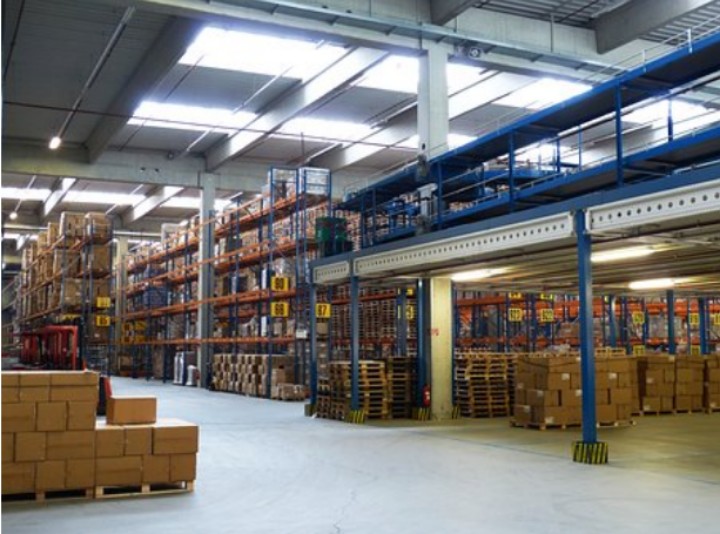Running a warehouse is a challenging endeavor. Not only do you need to oversee the day-to-day operations for order fulfillment and product storage, but you also must keep on top of ever-changing regulations, delivery deadlines, and inventory levels. With so much to worry about, business owners must create an effective stockpile management strategy, or their warehouses may become overcrowded and inefficiently run. To help get you started on this task, here are eight tips for effectively managing your warehouse.
1. Establish Clear Goals and Objectives
Before you begin making changes to your warehouse operations, it’s crucial to establish clear goals and objectives so that everyone in the organization understands what needs to be achieved. This includes setting realistic expectations for your staff, such as daily or weekly targets that must be met for the business to reach its ultimate goal of efficiency.
It is important to ensure these goals are achievable and challenging enough to push staff members to their limits. Additionally, ensure that your team understands their role in the warehouse and their goals for each task. You can also introduce incentives or rewards when certain goals are met to motivate and encourage employees.
2. Keep It Organized
Fostering an organized environment begins with having established guidelines for keeping items orderly. It is important to devote regular time to rearranging misplaced items and periodic organization checks to ensure everything is tidy.
Keeping a clean workspace will also help motivate workers and evoke a sense of pride in their workspace when they remain on task. Adopting these practices makes it much easier for management to locate desired items and reduce the time necessary for stocking shelves or shipping orders. Having an organized space drastically streamlines the management process from start to finish.
3. Invest in the Right Tools and Equipment
Investing in proper equipment and resources can reduce the time spent on mundane tasks and ensure that your staff can work safely. For example, a reach truck forklift can help speed up moving and storing goods, while pallet jacks can move bulk items. Additionally, investing in security measures like CCTV cameras or access control systems can help reduce the risk of theft and unauthorized access to the warehouse.
Ensuring that all equipment used in the warehouse is up-to-date, in good working condition, and meets safety standards set by OSHA is crucial. Investing in these tools and resources can help improve your warehouse efficiency while minimizing physical strain on workers from constantly lifting heavy goods.
4. Monitor Inventory Levels
Knowing the amount of stock available at any point ensures efficient operations and preparedness for future customer orders. Managing your inventory entails tracking all incoming and outgoing stock. Developing an intelligent inventory system can help track item availability and ensure that you always have the right amount on hand to meet customer needs.
Accurately monitoring your current levels allows you to plan ahead and order the necessary items before they run out. Additionally, streamlining the data collection process and integrating it with your other systems will help provide even more insights into patterns in sales or customer trends that can be utilized for future orders.
5. Maintain Safety Standards
Safety standards protect employees and customers, along with the product itself. Establishing safety protocols is essential for minimizing workplace injuries and avoiding accidents. To ensure the implementation of new regulations, provide adequate training to all personnel and conduct frequent follow-up sessions, so everyone is in the loop.
Furthermore, it is important to frequently check and maintain any tools utilized in the workplace and clear away any mess from pathways. Investing additional time and resources in safety measures may feel tedious but worthwhile. Doing so lowers potential liabilities and creates a secure workspace for your employees to thrive.
6. Train Your Staff
Regular training sessions should be scheduled to keep employees up-to-date with any changes or new procedures and ensure they are following safety guidelines. Additionally, it is essential to educate your staff on the mechanics of the warehouse and its layout so they can identify any potential inefficiencies or hazards.
Training should also include proper handling techniques for items and emergency procedures if something were to go wrong. Investing in regular check-ins, refresher courses, and training tools such as webinars to reinforce strategies ensures that your staff will be fully equipped with the necessary skillset for efficiency and quality measures.
7. Invest in Warehouse Management Software
Warehouse management software is a great tool for streamlining and improving the efficiency of your warehouse operations. This software can help you track inventory levels, optimize storage space, and organize accurate records. It can also automate tasks such as creating purchase orders or transfers between warehouses, making it easier and faster to complete tasks.
In addition, some warehouse management software programs also have features such as barcode scanning or RFID tracking, which can locate items within the warehouse while ensuring accuracy quickly. Investing in a reliable software system is crucial for streamlining your warehouse operations and keeping them running smoothly. This will help reduce operating costs and increase efficiency and give you a better understanding of your inventory levels to make more informed decisions.
8. Implement Lean Manufacturing Techniques
Lean manufacturing techniques can help you optimize warehouse operations by eliminating unnecessary steps and streamlining processes. Identifying any potential waste areas and working towards removing them from the system is important. Focusing on continuous improvement can reduce lead times, lower costs, and increase customer satisfaction.
Additionally, implementing lean practices such as Kanban cards or 5S will help you understand what works and what needs improvement. It is also vital to ensure that your staff understands the importance of applying these practices in their daily tasks, as they are on the front lines dealing with any issues. Establishing lean principles helps create an efficient workflow within your warehouse and eliminates the waste of time, money, and resources. In the long run, this will help drive customer satisfaction and ensure your operations run as smoothly as possible.
Improving warehouse efficiency is a key step in optimizing your business operations. You can create an efficient and cost-effective warehouse by following the tips outlined above. Investing in the right tools, software, and training sessions for staff are all critical factors to consider when striving for higher efficiency within your warehouse.
We hope you found this blog post on 8 Tips for Effectively Managing Your Warehouse useful. Be sure to check out our post on Top Things to Consider When Automating Your Warehouse Workflows for more great tips!
Have Experience in the Moving Industry? Want an Additional Income Stream? Work With All Around Moving!
If you are interested in applying your skills as a relocation consultant in the moving industry, check out our program to earn extra income. Partner with us, All Around Moving and we’ll help you make extra money. Click here to learn more.






